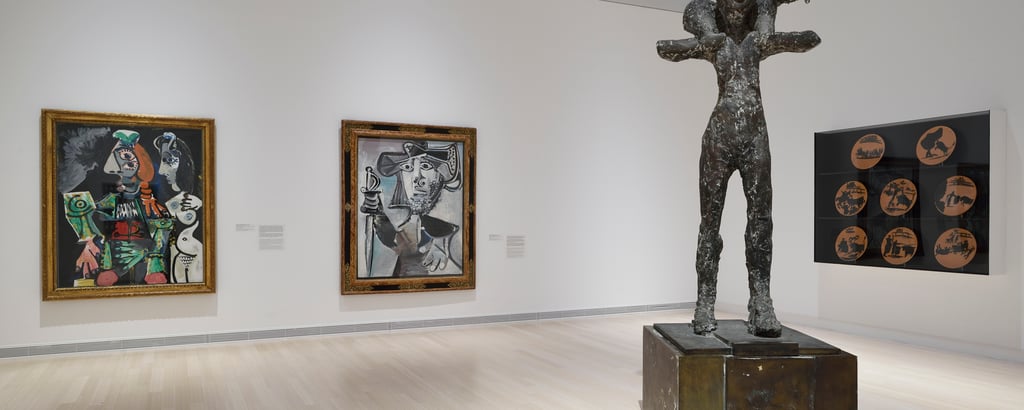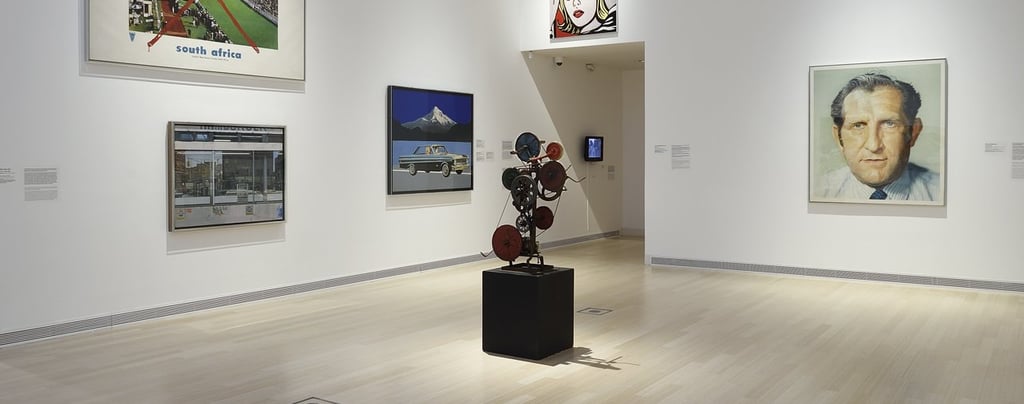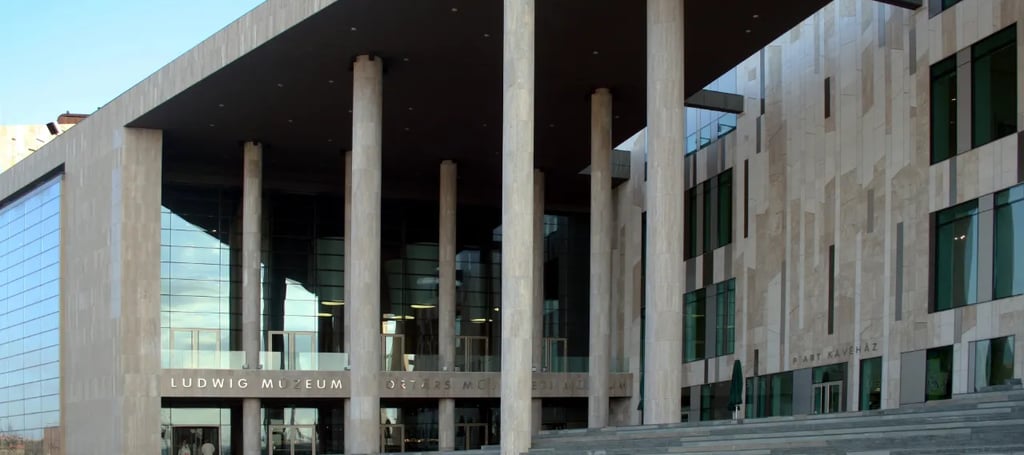Ludwig Museum – Museum of Contemporary Art: A Mirror of Now
Step into a river of colors, thoughts, and revolutions where art doesn’t sleep in history—it shouts, whispers, questions, and transforms.


A Sanctuary of the Contemporary
On the bank of the Danube, where the water reflects the ever-changing moods of the city, stands a building that holds no silence, no dust, no past without context. The Ludwig Museum – Museum of Contemporary Art is one of Europe’s most powerful cultural voices. Located within the striking Palace of Arts (Müpa Budapest), this institution invites you not to look at art but to confront it—to step into rooms where colors rebel, concepts collide, and meaning unravels only to reweave itself in your mind.
Founded in 1989, in the final breath of communist Hungary, the Ludwig Museum was born in revolution. Its very existence speaks of a cultural shift: the opening of borders, the hunger for modernity, the thirst for dialogue. This is not a museum of easy answers. It is a map of contemporary consciousness—personal, political, planetary.
The Ludwigs: Collectors of the Present
At the heart of this museum's origin lies the visionary couple Irene and Peter Ludwig, German art patrons with a passionate belief in the power of contemporary creation. Their collection, once privately held, became the seed from which several Ludwig Museums sprouted—Cologne, Vienna, Havana, and in 1989, Budapest.
The Ludwigs collected without prejudice, pursuing voices from both East and West during a time when the Iron Curtain still divided ideas and aesthetics. From American Pop Art to Soviet Non-Conformism, from conceptual performance art to experimental photography, they chased the contemporary like a comet across continents. What mattered was not the market value, but the urgency of expression.
Their generous donation to Hungary included more than 70 artworks, including pieces by Andy Warhol, Roy Lichtenstein, Robert Rauschenberg, and many Eastern European masters whose names were then only whispered.
What they gave Budapest was more than art. They gave it a portal to the world.
Architecture: Minimalism as Canvas
The museum is housed in the Müpa Budapest complex, a bold, modernist monolith of concrete, glass, and light. Unlike baroque palaces turned into museums, the Ludwig Museum’s building does not seduce with opulence. It clears the stage. Its clean lines, white walls, and airy volumes become a blank canvas, awaiting the raw immediacy of contemporary art.
Inside, the layout feels more like a flowing script than a rigid floor plan. Corridors widen into galleries. Galleries break into alcoves. Walls are mobile, rearranged for each exhibition. The architecture is never static, just like the art it holds. Whether you're viewing a multi-screen installation, a cavernous soundscape, or a delicate drawing, the building bends itself to accommodate.
The light is precise—never intrusive, always illuminating. And from the higher floors, the Danube shimmers through the windows like a reminder: you are not in a tomb of the past. You are in a living archive of now.
The Collection: Art That Thinks and Breathes
With over 700 pieces in its permanent collection and hundreds more rotating through temporary exhibits, the Ludwig Museum provides a profound survey of post-1960 art. The core themes include:
Pop Art – From the icon-smashing canvases of Warhol and Lichtenstein to Eastern Bloc parodies that re-appropriate Western consumer culture.
Eastern European Neo-Avant-Garde – Bold, strange, and unapologetically political, these works document dissent and survival under regimes that feared creative autonomy.
Photographic and Media Art – Experimental uses of lens, projection, and screen that play with time, perspective, and identity.
Installation and Performance Documentation – From the ephemeral to the monumental, many exhibits exist only in trace: a video loop, a prop, a journal.
Hungarian artists feature prominently—Imre Bukta, Dóra Maurer, Gyula Pauer, József Szurcsik—their works as diverse as their political contexts. Through their eyes, you see Hungary not as a passive receiver of trends, but as an active, rebellious participant in the global art conversation.
Yet what binds these disparate mediums and messages is a common thread: urgency. Nothing here is ornamental. Every piece asks you something. About power. About memory. About body and state. About truth.
Temporary Exhibitions: Voices of the Moment
What keeps visitors coming back to the Ludwig Museum again and again are its temporary exhibitions—ever-changing, ever-provocative. These shows often focus on a specific theme, artist, or moment in time, offering deep dives into:
Postcolonial identity
Feminist intervention
Environmental collapse
Digital fragmentation
Migration and exile
Recent exhibitions have explored everything from the aesthetics of surveillance to the visual culture of protest. Multimedia, multilingual, multivocal—these exhibits are laboratories of perception. You are not meant to pass through them untouched.
Some installations offer headphones. Others demand silence. Some invite you to touch, scribble, step inside. Others hold you at a distance. Every show reconfigures the museum into a new world.
And frequently, these exhibitions are interdisciplinary, including live performances, artist talks, and even VR experiences. The goal is not just to look at art—but to be inside it.
Educational and Community Programs
The Ludwig Museum is not an ivory tower. It is a platform. A meeting point. A mirror. To that end, it hosts a rich calendar of events and educational activities for all age groups:
Workshops for children, teens, and adults
Guided tours in multiple languages
Artist roundtables and curatorial lectures
Interactive programs for schools and universities
Ludwig Lounge – informal gatherings where art lovers and artists converse over drinks and music
There’s a strong emphasis on inclusivity and accessibility. Programs are designed to engage everyone—from art students to first-time visitors, from local schoolchildren to international tourists. The museum believes that art should not only provoke—it should connect.


The Museum Shop and Café: Souvenirs of the Sublime
No visit to the Ludwig Museum is complete without stepping into its design-forward museum shop—a carefully curated space filled with more than souvenirs. Here, you’ll find:
Art books and exhibition catalogues
Local designer goods
Prints and posters of exhibited works
Unique stationary and accessories
Hungarian-made ceramics and wearable art
It’s not about commerce—it’s about continuing the experience. Taking a piece of thought, texture, and visual energy with you.
Next to the shop, the museum café offers respite. It’s a modern, minimalist space where you can sip on coffee or Tokaji wine, reflecting on what you’ve seen. Through its windows, the Danube flows like a musical staff. Your mind, meanwhile, begins to hum.
Visitors’ Experience: What to Expect
The Ludwig Museum is not built for a passive experience. You may feel challenged, overwhelmed, thrilled, inspired—or all at once. Some exhibitions are comforting in their beauty. Others are deliberately jarring. Some pieces will speak to you in poetry. Others in protest.
But every visit is unforgettable. Whether you're a scholar or a curious traveler, a painter or an IT student, the museum’s ecosystem of ideas will leave you changed. It is a site of empathy, a training ground for awareness, a rehearsal space for the future.
There is no dress code here. No highbrow snobbery. Just open eyes and ears, a willingness to see and feel.


Visiting Information
📍 Location
Ludwig Museum – Museum of Contemporary Art
Müpa Budapest, Komor Marcell u. 1, 1095 Budapest, Hungary
Located on the southern bank of the Danube, next to the National Theatre and within the Müpa cultural complex.
🕰 Opening Hours
Tuesday – Sunday: 10:00 AM – 6:00 PM
Mondays: Closed
Last ticket entry: 5:30 PM
🎫 Ticket Prices
Adults: HUF 2,400 (~$6.50)
Students/Seniors: HUF 1,200 (~$3.25)
Children under 6: Free
Family ticket (2 adults + 2 children): HUF 4,800 (~$13)
Temporary exhibitions may have separate pricing
🎟 Tickets can be purchased online or at the museum entrance. Guided tour packages and combo offers with other Müpa attractions are available.
♿ Accessibility
The Ludwig Museum is fully wheelchair accessible and equipped with elevators and ramps. Multilingual exhibition texts and audio guides (English, German, Hungarian) are available. Guided tours can be tailored for visitors with disabilities upon request.
Official Website and Social Media
Stay connected, explore virtual exhibitions, and find event updates here:
🌐 Website: https://www.ludwigmuseum.hu
📘 Facebook: https://www.facebook.com/ludwigmuseum
📷 Instagram: https://www.instagram.com/ludwigmuseum








